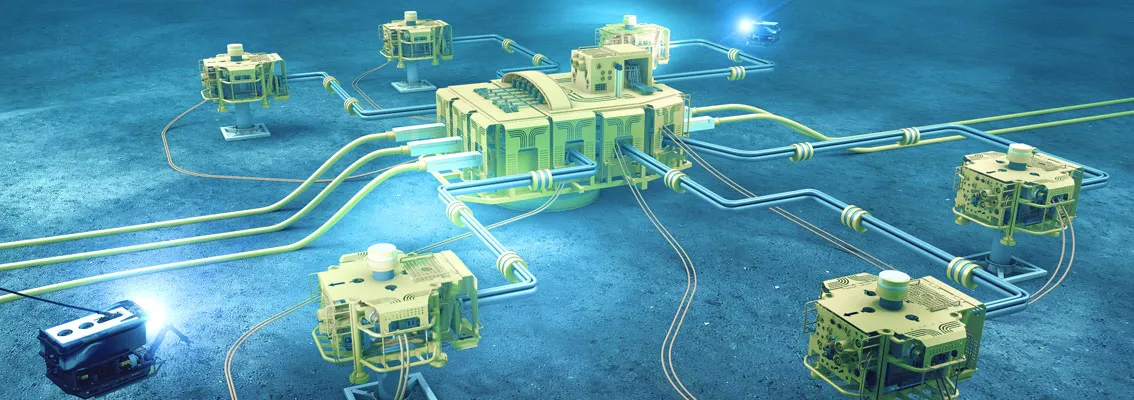Subsea processing offers great potential for the oil and gas sector, but is also a relatively young field of technology, causing costly and inefficient tailor-made solutions. The DNV GL-led joint industry project (JIP) on standardizing subsea processing aims to reduce cost in a lifetime perspective. Initially focusing on subsea pumping, the partners in phase 1 have now concluded the functional description of subsea pumping, while phase 2 will deliver standardized guidelines. With all the four leading system suppliers on board, new operators are still welcome to join the project.
According to DNV GL’s seventh annual benchmark study, Short-term agility, long-term resilience1, subsea technology is the highest-ranked area globally for conducting R&D among emerging technologies in 2017. In addition, standardization efforts are on the rise to remove complexities, with two-thirds of respondents saying their organization will seek greater standardization of tools and processes in 2017. Although subsea processing is a target area for innovation, operational experience has also grown in recent years, with significant developments made by, among others, Total, Petrobras, Shell and Statoil. However, the lack of standardization which is driving costs up is still seen to make subsea processing less competitive than alternative solutions.
Kristin Nergaard Berg, JIP project manager, DNV GL – Oil & Gas, says: “Subsea standardization offers tremendous benefits. It allows flexibility for tailor-made facilities at a system level through standard functional descriptions and specifications, while also increasing predictability in the value chain. This will not only lower transaction costs and accelerate implementation for all parties, but also allow freedom to innovate and employ new technology.”
The kick-off for phase 2 of the Subsea Processing JIP was recently held at DNV GL’s headquarters at Høvik, Norway. The JIP includes system suppliers Aker Solutions, GE Oil & Gas, OneSubsea and TechnipFMC and operators Shell, Statoil and Woodside. Phase 2 is expected to lead to a guideline and eventually a recommended practice for subsea pumping systems.
Building on the concluded functional description from phase 1, the JIP will continue by developing system level requirements and design classes, as well as harmonized work processes and design standards.
Phase 2 activities are related to:
- Standards, functional requirements and specifications
- System design
- Pump modules and pressure-containing equipment
- Control system and instrumentation
- Power system
- Materials and welding
- Qualification work processes and test requirements.
Hans Christian Nilsen, Head of Boosting Technology, Aker Solutions, says: “The subsea industry is looking towards standardization for ensuring cost-efficient and reliable technology. Aker Solutions welcomes a harmonized approach with the vendors and oil companies, which will enable the future large-scale use of subsea boosting.”
Morgan Harland, General Manager, Subsea & Pipelines, Woodside, says: “Through innovation and collaboration, Woodside aims to deliver outstanding performance of our subsea and pipeline systems throughout the entire lifecycle. The standardization of subsea processing JIP and its initial focus on subsea pumping hits the mark with standardized guidelines being developed for subsea processing modules and interfaces that are efficient, reliable and readily installed and serviced. We use subsea boosting in our subsea production systems and know that these are important lifecycle cost drivers.”
Kjell Eriksson, Regional Manager Norway, DNV GL – Oil & Gas, says: “Like more conventional solutions, subsea processing must prove to be cost efficient to be considered attractive. At the same time, subsea processing will be an enabler for increased oil recovery. Through collaboration with the big players in the subsea industry, this JIP drives subsea processing towards being a competitive and viable solution for a wide range of future oil and gas fields.”
Phase 2 will be completed in 18 months.
1. The outlook for the oil and gas industry in 2017 is an industry benchmark study from DNV GL, the leading technical advisor to the industry. Now in its seventh year, the programme builds on the findings of six prior annual outlook reports, first launched in early 2011. During October and November 2016, we surveyed 723 senior professionals and executives across the global oil and gas industry, along with 14 in-depth interviews with a range of experts, business leaders and analysts. Two–thirds (66%) are employed by suppliers and service companies across the industry, while 26% of respondents work for oil and gas operators. The remaining respondents come from regulators and trade associations. The companies surveyed vary in size: 41% had annual revenue of USD500m or less, while 18% had annual revenue of more than USD5bn. Respondents were drawn from right across the oil and gas value chain, including publicly listed companies and privately held firms. They also represent a range of functions within the industry, from board-level executives to senior engineers.
